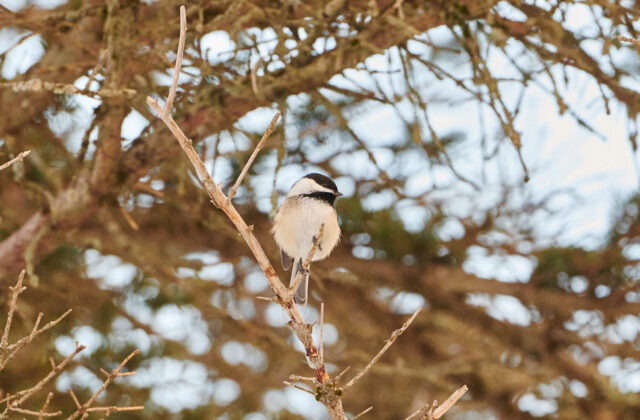Annual Bird Event Counts on Norfolk Citizen Scientists
Text by Kelly Kandra Hughes
Photo by Savage Frieze
Over four days every February, people flock to the Internet to participate in the Great Backyard Bird Count (GBBC). The GBBC is one of the most prolific citizen science projects in the world, with 268,674 participants from 194 countries in 2020. Started in 1998 by the Cornell Lab of Ornithology and the National Audubon Society, it also happens to be the longest-running online citizen science project. With the pandemic still raging across the country and the vaccine rollout slower than expected, the upcoming GBBC, Feb. 12-15, is a perfect way to connect with something bigger than yourself that also gives back to the scientific community.
The beauty of citizen science projects is that anyone, anywhere, can participate. Bethany Sheffer, volunteer coordinator and naturalist at the Sharon Audubon Center, suggests the GBBC can be empowering for those who participate. “[Participants’] data is so important and will be used by scientists who study global bird populations prior to annual migrations. The GBBC invites everyday people to contribute. While this initiative is so much bigger than our little region, we still need to know about the stability of black-capped chickadee populations and whether more yellow-bellied sapsuckers might be hanging around during the winter instead of migrating south.”
Ayreslea Denny, a longtime Norfolk resident and lifelong birding enthusiast, understands the value of counting and observing birds. “The last whippoorwill I saw on our property was in 1969 or 1970. Some of the birds we see now in Norfolk, like cardinals and titmice, we didn’t have here when I was child. It’s very interesting to see all the changes.”
Denny says she loves the “hunt” of birding. “I go out with my binoculars and look and see what’s there.” But the hunt isn’t required for the GBBC. You can even participate from the comfort of your own home! According to the GBBC website, the rules are simple: (1) Count birds anywhere you like for at least 15 minutes and keep track of the kinds of birds you see and how long you watched; (2) make your best estimate of how many birds you saw of each species (e.g., five northern cardinals, three American crows); and (3) enter your data online using the eBird mobile app or the Merlin Bird ID app (both available in the App Store or Google Play) or directly on the eBird website (https://ebird.org/home).
This ease and the casual nature of the GBBC are why Sheffer is such a strong proponent of participation. “One fabulous thing about the GBBC is that it engages people to count birds where they are. So someone does not have to travel to a specific habitat type or location but can count all the birds they see right in their own backyard.”
As an added bonus, bird-watching is downright fun. “I love them all!” exclaims Denny, who keeps a long list of all the birds she has seen over the years. Sheffer offers a more scientific reason. “We could all use more time outside as many of us are still grappling with the effects of prolonged isolation and stress.”
For more information on how to participate in this year’s Great Backyard Bird Count, visit https://www.birdcount.org/.

